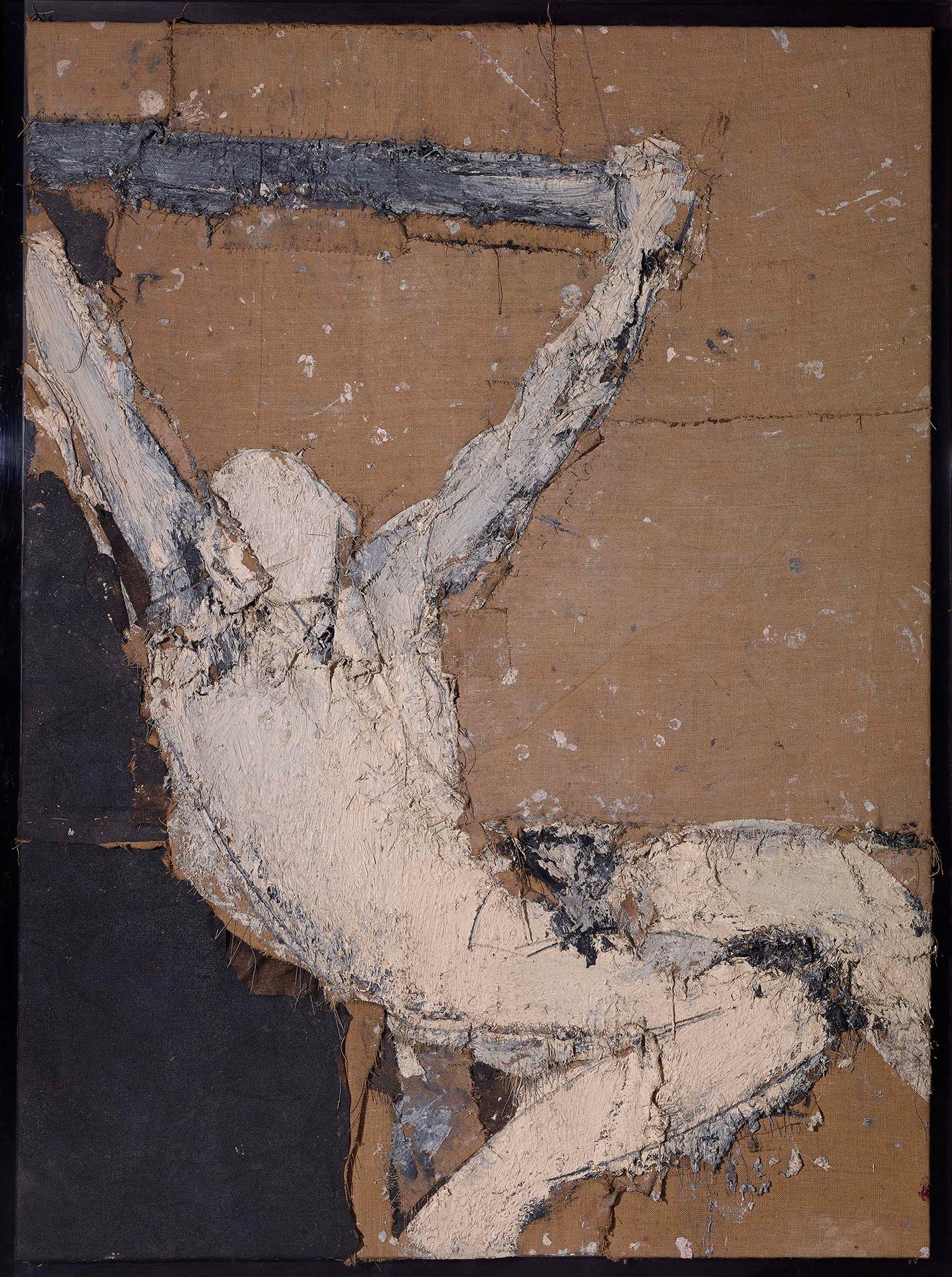
Manolo Valdés (Valencia, 1942)
Ribera as a Pretext
1988
WORK INFORMATION
Oil on hessian, 200 x 152 cm
The death of Rafael Solbes in November 1981 marked the end of Equipo Crónica, the group in which Manolo Valdés had been heavily involved since its founding. He then embarked on a solo career in which he maintained certain fundamental aspects of the collective, such as the continuing interpretation of the history of painting as an inexhaustible source of forms with which to establish a consistently renewed dialogue. In the mid-1980s, Valdés shifted the orientation of his work towards matter. In contrast to the spot inks and absence of pictorial gestures typical of his previous phase, he began to use pronounced textures in his painting, clearly visible brushstrokes loaded with colour and rough pieces of stitched hessian covered in heavy impasto. In sculpture, which became increasingly important in his oeuvre, he used a considerably wider range of materials and formats. Matter has always fascinated the artist, and on several occasions he has expressed an interest in the tradition of matter-rich painting since Art Informel.
Infanta doña Margarita VII [Infanta Margarita VII] and Infanta doña Margarita X [Infanta Margarita X] are part of the Las Meninas series, a theme previously explored by Equipo Crónica and a constant in Valdés's work even today. Starting in the mid-1980s, he produced several versions on canvas, plywood and paper as well as lead and zinc plate sculptures of the portrait of The Infanta Margarita of Austria painted after 1660 by Juan Bautista Martínez del Mazo, a disciple and son-in-law of Velázquez, to whom this portrait at the Museo del Prado was attributed for many years. In these paintings, the tactile, textural quality is immediately apparent in the pastose application of colour, white highlights that create shiny patches, pinks, greys and silvers evocative of Velázquez's palette, while the gem-studded sash adorning the princess in the portrait is transformed here by Valdés into an energetic diagonal black slash. Long strokes in different directions reinterpret those appearing in the original picture on Lady Margarita's silk dress and hoop skirt. As in many other paintings, these Infantas by Valdés have no face, only a daub of colour that draws the viewer's attention back to the pictorial treatment of the motif, focusing on the sign rather than the signified.
Ribera como pretexto [Ribera as a Pretext] (1988) was produced at a later time, when textures were accentuated by the use of visibly irregular, roughly sewn pieces of hessian. The cloth is only partially covered with colour: on the left side, a dark brown recalls the Tenebrist backgrounds of Spanish Baroque painting. The white figure, once again faceless, is an isolated reinterpretation of the saint in The Martyrdom of Saint Philip by José de Ribera (1639, Museo del Prado), which he uses as a "pretext" for embarking on this new phase of ragged, matter-rich composition. [Carmen Bernárdez]

